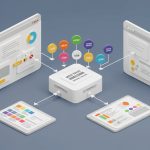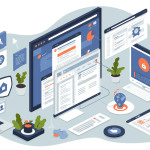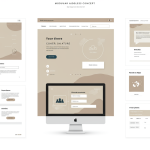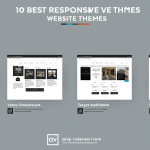
As website themes become more complex and client demands escalate, solo development models struggle to keep pace. In 2025, successful teams leverage collaboration tools, branching strategies, and automated pipelines to deliver maintainable, scalable themes. This guide walks you through integrating Git-based workflows, design systems, and continuous integration/continuous deployment (CI/CD) into your theme development process. By the end, you’ll have practical steps to unite designers and developers, ensure code quality, and accelerate releases.
Why Collaborative Development Matters for Website Themes

Building a website theme often requires skillsets ranging from UI design and markup to JavaScript interactivity and performance tuning. When designers and developers work in silos, miscommunications lead to rework, delayed launches, and inconsistent user experiences. Adopting a collaborative approach reduces friction by centralizing assets, standardizing components, and automating repetitive tasks. Teams that embrace collaboration report faster iterations, clearer code ownership, and higher customer satisfaction.
Setting Up a Robust Git Workflow
Git forms the backbone of modern collaboration. Define a branching strategy that balances stability and flexibility. Popular models include Git Flow, GitHub Flow, and trunk-based development. Regardless of your choice, maintain these core principles:
- Main Branch Protection: Restrict direct pushes to your “main” or “master” branch. All changes should arrive via pull requests (PRs) to enforce code review.
- Feature Branches: Create short-lived branches for each new theme feature, bug fix, or enhancement. Name them consistently, e.g.,
feature/responsive-navbarorfix/color-contrast. - Pull Requests & Code Reviews: Require at least one reviewer before merging. Use PR templates to remind contributors of testing steps, design updates, and documentation needs.
Branch Naming & Lifespan
Keep branches focused on a single concern. Short-lived branches (<2 weeks) reduce merge conflicts. Use prefixes like feature/, bugfix/, hotfix/, and chore/. This classification helps teammates locate work quickly and automate semantic versioning & release notes generation.
Automated Checks on Git Events
Integrate automated linters, unit tests, and style validators to run on every pull request. Tools such as ESLint, Stylelint, and Prettier catch formatting and accessibility issues early. Extend checks with custom scripts to validate theme metadata, enforce color contrast ratios, or verify responsive breakpoints.
Incorporating a Shared Design System
Design systems reduce duplication and ensure visual consistency across projects. They bundle UI components, style tokens, and usage guidelines into a single source of truth. When integrated into your theme codebase, designers and developers reference the same assets, minimizing interpretation errors.
Choosing Your Component Library
Evaluate popular libraries like Storybook, Bit, or custom monorepos managed with tools like Lerna or Nx. Storybook offers a visual playground for components, enabling real-time tweaks without running the full application.
Defining Style Tokens
Centralize colors, typography scales, spacing, and shadows into JSON or YAML files. Generate CSS custom properties, SASS variables, or design tokens compatible with design tools like Figma. This alignment ensures that a designer’s red (#E53E3E) matches exactly the developer’s var(--color-error).
Automating Your CI/CD Pipeline
Manual deployments introduce human error and slow feedback loops. A CI/CD pipeline ensures that every code change flows through build, test, and deployment stages automatically. Popular CI platforms include GitHub Actions, GitLab CI, CircleCI, and Jenkins.
Building & Bundling
Configure your pipeline to run build scripts for production and development variants. Use tools like Webpack, Rollup, or Vite to generate optimized CSS, bundled JS, and asset hashes for cache busting. Cache dependencies between builds to speed up the process.
Automated Testing
Incorporate end-to-end tests (e.g., Cypress or Playwright) to validate theme behavior across browsers and devices. Run accessibility audits with Axe or Lighthouse CI to detect contrast and ARIA issues. Failing tests should block merges to main branches.
Continuous Deployment

For staging environments, deploy every successful merge to a preview URL. For production, implement gated releases with manual approval gates or feature flags. This strategy balances agility with risk management.
Best Practices for Team Collaboration
Beyond tools, foster a collaborative culture. Schedule regular design walkthroughs and pair-programming sessions. Document style guides and coding conventions in a centralized wiki. Hold retrospectives after major releases to identify process improvements.
- Clear Documentation: Maintain a living style guide. Update it whenever a component or token changes.
- Communication Channels: Use Slack or Microsoft Teams channels dedicated to theme development. Automate CI/CD notifications to keep the team informed of build statuses.
- Onboarding Playbook: Streamline new contributor setup with a script that clones repos, installs dependencies, and runs initial tests.
Conclusion
Collaborative website theme development combines version control, shared design systems, and automated pipelines to deliver high-quality themes faster and with fewer errors. By standardizing your Git workflow, integrating UI components, and enforcing CI/CD, your team can focus on innovation rather than firefighting. Embrace these practices in 2024 to elevate your development process, delight your clients, and maintain a competitive edge in the rapidly evolving web landscape.
Ready to get started? Audit your current workflow, pick one area (Git strategy, design system, or CI/CD) to optimize, and iterate from there. Consistent, incremental improvements deliver long-term gains in productivity and product quality.
















No Comments